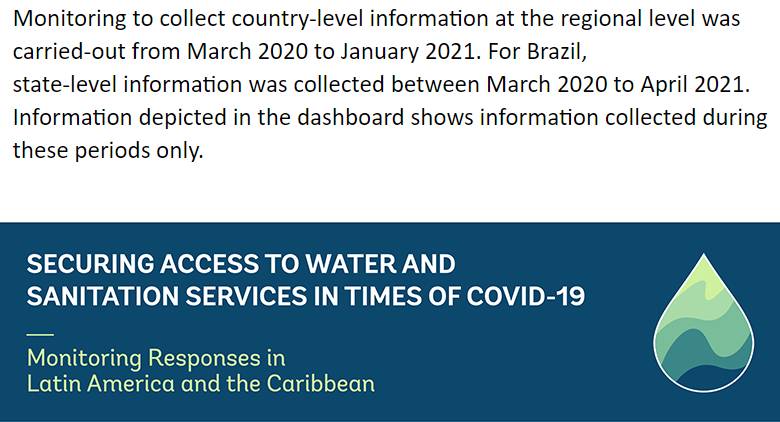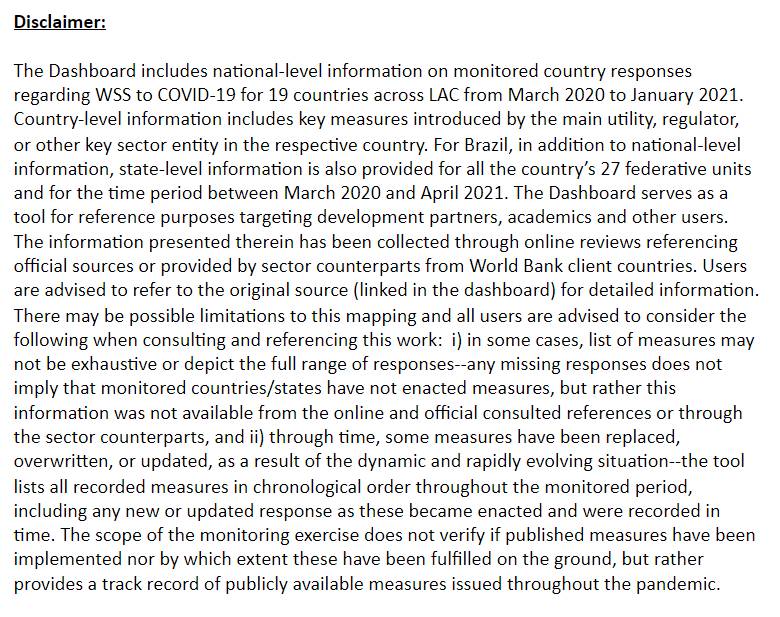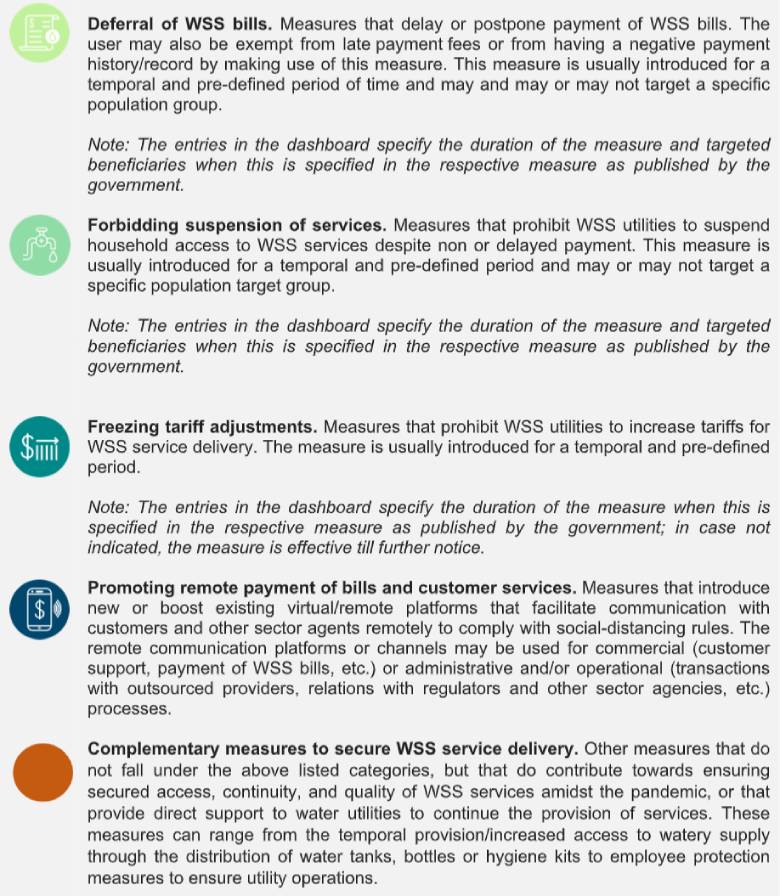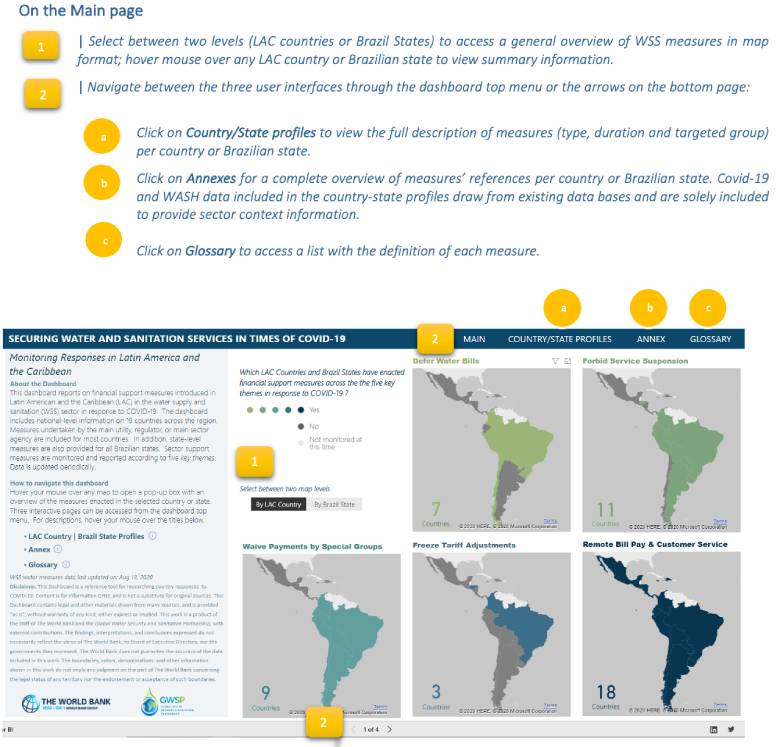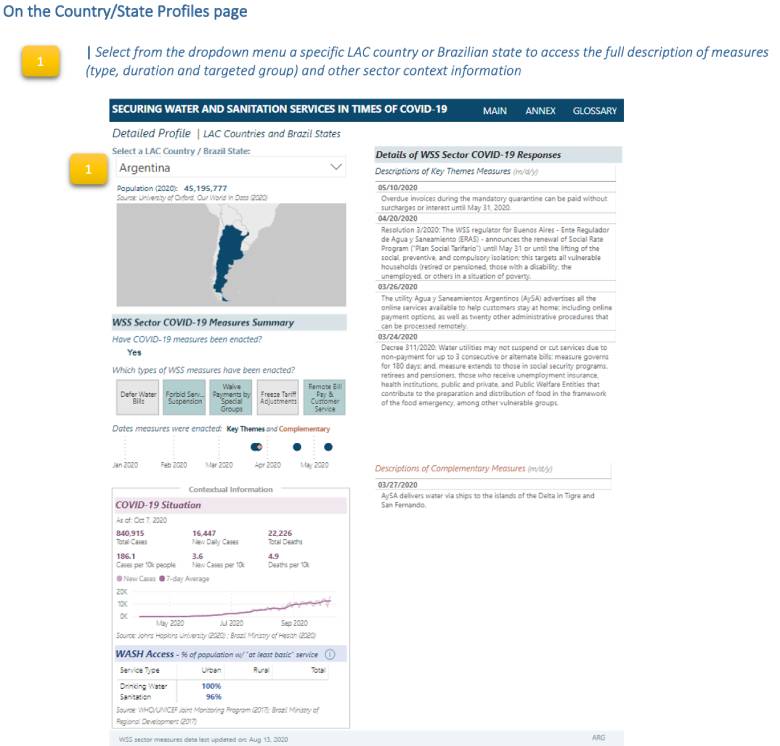Timeline scope. This dashboard includes country-level information at the regional level covering the March 2020 to January 2021 period. For Brazil, state-level information was collected between March 2020 to April 2021. The monitoring exercise has concluded, and the dashboard has not been updated beyond these dates. In some cases, links included in the dashboard that were active at the time of data collection may therefore no longer be available.
Geographical scope. The dashboard includes national-level information on 19 countries across LAC. In some cases, the country-level information also includes key measures introduced by the main utility, regulator, or other key sector entity in the respective country. Further to national-level information on Brazil, a state-level deep dive is provided on all 27 federative units in Brazil.
Analytical scope. The scope of this activity is limited to reporting what the countries are doing and does not go as far as to identify policy gaps. Likewise, the scope does not verify if published measures have been implemented nor by which extent these have been fulfilled on the ground. As the research approach follows a desk review of published information, it should be noted that missing responses does not imply that monitored countries/states in Brazil have not enacted measures if otherwise not readily available/published online.
Information gathering and sourcing. The information presented in this dashboard is collected through online reviews or provided by sector counterparts from World Bank client countries. All content is primarily sourced from official government documentation and references, and where relevant backed with news articles or social media announcements published by governments and water utilities (the latter being primarily relevant to collect information on the ‘remote bill pay and customer service’ theme). Users are encouraged to refer to the original source referenced in the dashboard for detailed information.
Presentation of findings. The dashboard allows the user to access monitored information by navigating through three distinct user interfaces. On the main page, the user can select between two maps, one for the LAC region and one for Brazil at the state-level for a general overview of tracked measures. By clicking on the country or state profiles, the dashboard allows the user to access for each country or Brazilian state of interest the full list of measures in chronological order, as well as a very brief account of each measure as published by the government or sector agency. Refer to How to Use the Dashboard for guidance on how to navigate the dashboard.
Target audience. The collected information is intended to provide a quick overview of the sector responses, to sector practitioners and decision-makers, among others to support and inform on-going and future dialogues with country authorities and development partners. This effort can also provide inputs for further analysis to decipher good practices, as well as facilitate capturing lessons learned to strengthen response and preparedness capacities in the WSS sector against future emergencies and shocks.

